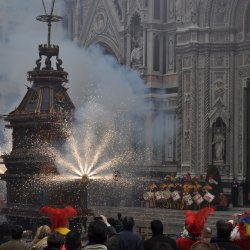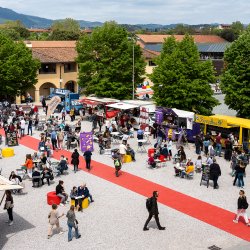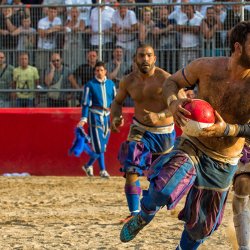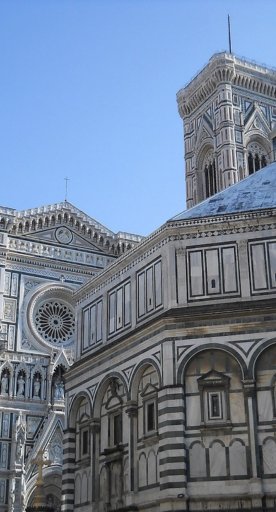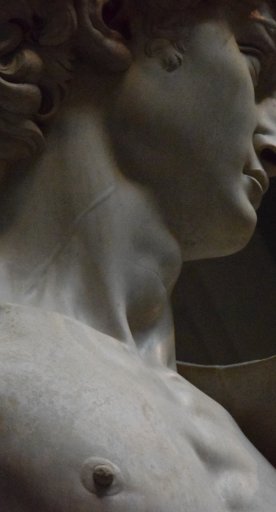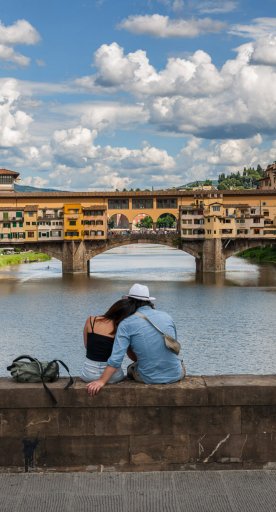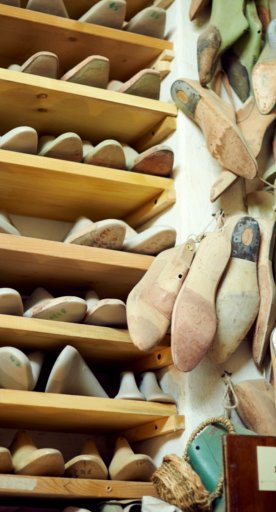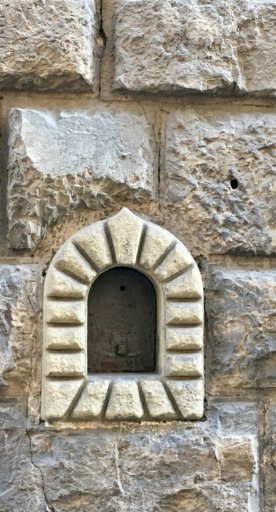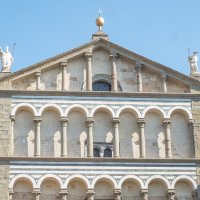

Medicean and more: 10 villas around Florence
A selection of historic houses and gardens to visit when the good weather arrives
Villas in Tuscany are a sort of leitmotif, they are part of the landscape as they are in the open countryside or just outside the cities incorporated into once rural areas, now suburbs of urban centers.
The territory of Florence and Florentine Area, where villas of ancient origin and unaltered beauty are everywhere, is no exception. Some bought by public institutions and converted into a museum or a cultural center, many available as accommodation facilities… but all of them linked by a common denominator: they are proof of a social class, the nobility, that accurately chose the most beautiful places to retreat to the peace of the countryside.
Here, then, are some visiting ideas for getting out of the city borders: villas are no longer only for a select few, but can be enjoyed by all of us.
-
1.The Medici Villa of Petraia and the Medici Villa di Castello
-
2.Villa Peyron in Fiesole
-
3.Villa Poggio Reale in Rufina
-
4.Villa Torre a Cona, Rignano sull'Arno
-
5.Villa I Bonsi in Reggello
-
6.Villa Il Riposo in Grassina
-
7.Villa di Castelpulci in Scandicci
-
8.Villa Caruso Bellosguardo in Lastra a Signa
-
9.Villa Montalvo in Campi Bisenzio
-
10.Villa Guicciardini Corsi Salviati in Sesto Fiorentino
The Medici Villa of Petraia and the Medici Villa di Castello

We start from the capital city, Florence, where the trace of the Medici family is strong and has characterized the city and its surroundings; in the area of Castello, west of the city center, are located adjoining - actually it is the two parks that border each other - the renowned Medici Villa of Petraia and Medici Villa di Castello, the firsts to be chosen and made more beautiful and luxurious by the family.
Both are UNESCO World Heritage Sites; their gardens, with the conjunct romantic park, can be freely visited. Although they are close, they have very different aspects; we want to highlight two of them here: the Savoy family lived in Petraia and left 19th-century furniture and adornment; while the garden of Villa di Castello holds an amazing collection of citrus plants, started earlier by the Medici family, which had a passion for these plants.
Villa Peyron in Fiesole

The Villa Peyron in Bosco di Fontelucente complex is located in a panoramic position on the hill of Fiesole.
The villa, which was built, it is thought, on an Etruscan site and over the centuries had renovations and modifications, is surrounded by a scenic garden. This is structured into several terraces sloping toward Florence, organized with boxwood parterres along the southern axis of the villa.
But also of great landscape value are the olive grove, the wood and the grand pine boulevard in the southern part of the park.
Villa Poggio Reale in Rufina

In this virtual tour around Florence we move eastward and find, right at the entrance to the town of Rufina, the Villa Poggio Reale. We are in the Sieve Valley and the building dominates the town, with a majestic entrance made by an avenue lined with cypress trees.
The 15th-century villa is strongly linked to the production of Chianti Rufina wine; municipal property, it has two different museums inside and is surrounded by a beautiful public park.
Villa Torre a Cona, Rignano sull'Arno
In terms of majesty, the 18th-century Torre a Cona has nothing to envy from other Tuscan villas.
We are in the area of San Donato in Collina, in the municipality of Rignano sull'Arno, and from its elevated position, the villa displays all the elements of tradition: an Italianate garden, a forest of holm oaks and sumptuous rooms, which now house a connoisseur's accommodation.
Villa I Bonsi in Reggello

Thanks to its somewhat severe towers, it has a typically neo-Gothic appearance; in fact, the Villa I Bonsi, although of Renaissance origin, was completely renovated in the second half of the 19th century by the family of the current owners, Budini Gattai. It therefore looks like a villa-castle, surrounded by an immense park. We are located in the municipality of Reggello, immersed in beautiful countryside and a stone's throw from the parish church of Sant'Agata in Arfoli: the villa is an agritourism facility.
Villa Il Riposo in Grassina

Villa il Riposo is located in the territory of Grassina, a hamlet of Bagno a Ripoli. The most curious part of the building, with its unusual pink color, dates back to 1573 when the owner at the time, Bernardo Vecchietti, had the structure of the Fonte della Fata Morgana built.
A fountain, then, where there was a marble statue of the legendary Fairy, for whose features the sculptor Giambologna was commissioned; however, today it is no longer possible to admire it in its original location.
Villa di Castelpulci in Scandicci
A sumptuous country residence, the villa of Castelpulci was owned by important noble families such as the Soderini and the Riccardi. Its present appearance is due to 17th/18th-century interventions.
From the mid-19th century until 1973 it was the site of a psychiatric hospital, and among the patients in its care was the poet Dino Campana, who spent 14 years of his life there until his death.
Today the beautifully restored villa houses the High School of the Judiciary. Although it is not open for visits, nearby, in the hills of Scandicci, you will find many trails and back roads ideal for walking and mountain biking.
Villa Caruso Bellosguardo in Lastra a Signa

The villa, the park and now a museum: everything on this hill speaks of the Neapolitan tenor Enrico Caruso. Eager to create a space for himself and his beloved, he bought it in 1906 by doing major restoration work on the villa and park. This, originally designed by Tribolo, retains much of its original character.
On the main floor of the villa is the Enrico Caruso Museum; the whole complex lends itself to a visit to appreciate the greenery and learn about the history of this extraordinary artist.
Villa Montalvo in Campi Bisenzio

In the flat area west of Florence in the municipality of Campi Bisenzio lies an immense public park (19 hectares) with Villa Montalvo at its center. Dating back to 14th-century, the villa had many noble owners: the Tornaquinci family then the Del Sodo family, the Spinelli family, the Medici family, and finally the Ramirez di Montalvo family, from whom it borrowed its name.
This space is therefore, both for the villa's environments and its greenery, an ideal place to participate in cultural or social events and to do sports activities.
Villa Guicciardini Corsi Salviati in Sesto Fiorentino

Although Sesto Fiorentino is also developed in the hills (and there is no shortage of villas) this splendid building is located in the flat part and adjacent to the city center. Villa Guicciardini Corsi Salviati is of 16th-century origin but with Baroque interventions that still connote it today.
Although divided into two sections, the garden reveals all the splendor of the past; the fishpond is particularly striking.
Visits are possible by reservation only.








